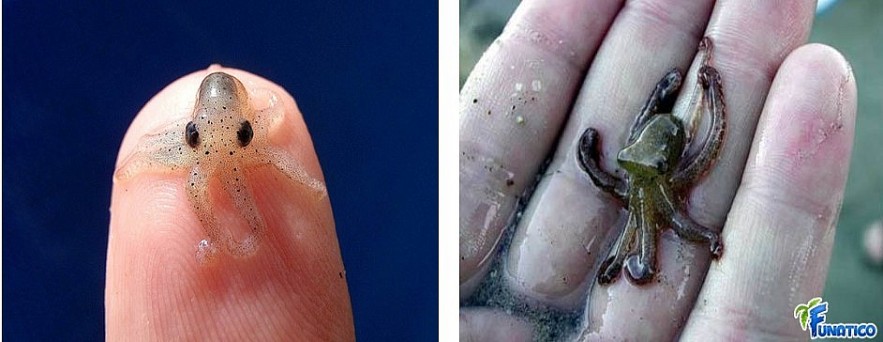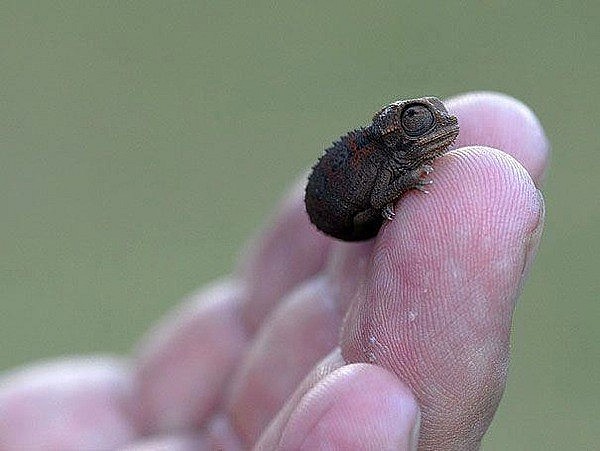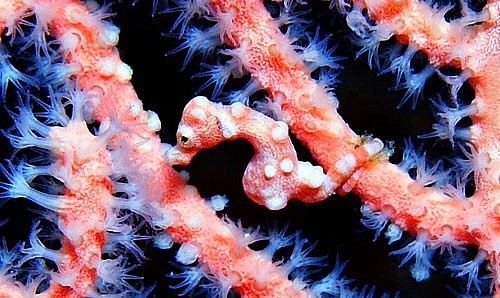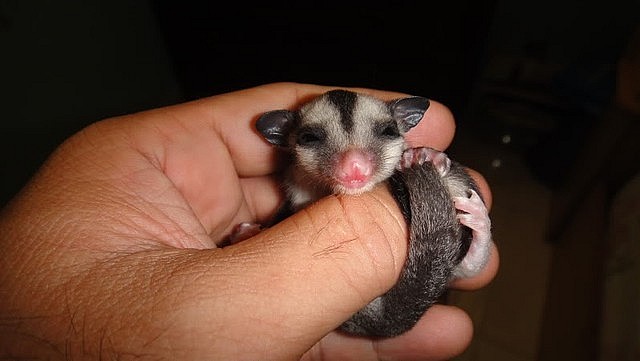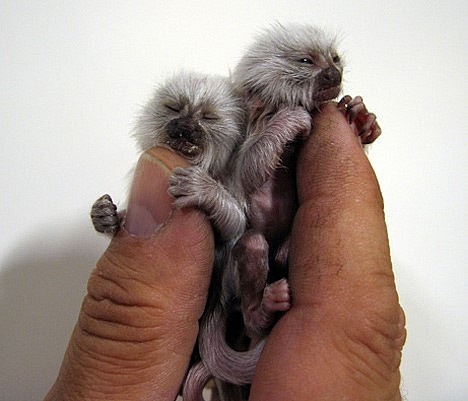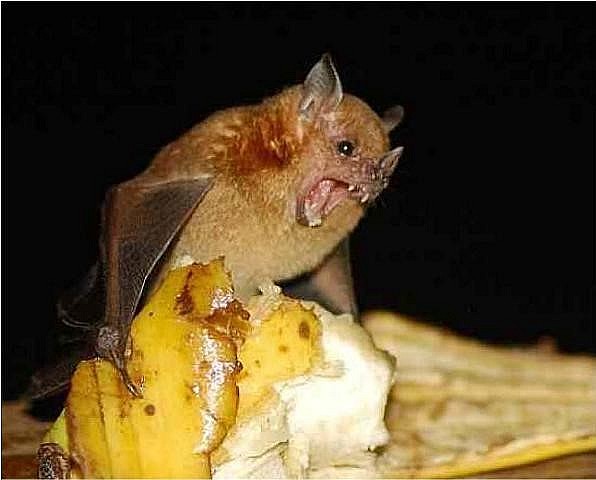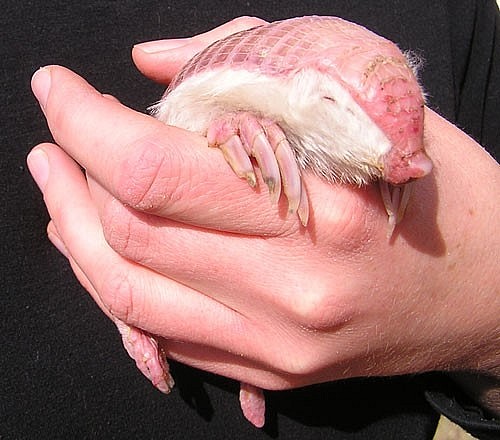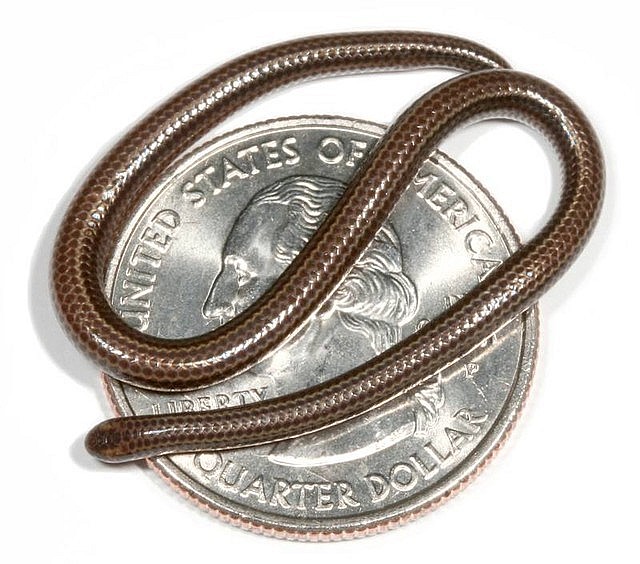Not all huge things are excellent; many strangely small species are really cute and unusual.
The smallest animals in the natural world
1. Wolfi Octopus
I expected an octopus to be so large that it could devour whales and sink a ship, as depicted in movies, yet the Wolfi octopus is the world's smallest. This species was identified in 1913, following years of hunting in Indo-Pacific waters. An adult weighs only 1 gram and is approximately 1.5 cm long, allowing it to dangle gently on your fingers.
 |
| The smallest octopus |
2. Brookesia Micra Gecko
The tiny Brookesia Micra gecko was discovered in Madagascar in 2012. They spend the most of their time dwelling under fallen leaves, which makes research challenging. When the light goes down, these geckos climb tree trunks to sleep; this is how people have found them. Brookesia Micra, one of the four smallest lizards, measures only 29mm long and can stand on the head of a match.
 |
| Only 29mm long Brookesia Micra |
3. Seahorse Hippocampus Denise
Hippocampus Denise seahorses, which live at depths ranging from 13 to 90 meters in the Western Pacific Ocean, were initially misidentified with infant seahorses. In fact, the largest one measures barely 16mm long. In addition to their small size, they are extremely difficult to detect since they frequently hide in big coral clusters. This problem is the only impediment to identifying the number of species in order to develop conservation measures in the current climate of marine pollution and illicit fishing.
 |
| Seahorse Hippocampus Denise |
4. Turtle Speckled Padloper
Adult Speckled Padloper turtles are only 11cm long, but they can bully other turtles in order to compete for food. Spotted tortoises are 16 times smaller than Galaparos tortoises. To make things easier to imagine, multiply your height by 16 times. The speckled shell provides excellent camouflage against all attackers, and because it is so weak, spotted turtles frequently hide among rocks. Maintaining the breed is particularly challenging, as each female's body can only hold one egg every birth. This puts them at risk of extinction owing to hunting, predators, and habitat degradation.
 |
| Turtle Speckled Padloper |
5. Flying squirrel Sugar Glider
Many Vietnamese people keep sugar glider marsupials as household pets. They are nocturnal arboreal squirrels native to Papua New Guinea, Indonesia, and Australia's east coast. Adult flying squirrels are 16 - 20cm long and have a thin membrane spanning from the center of their arms to the end of their rear legs, allowing them to fly up to 60 - 100 metres in a few seconds. Newborn flying squirrels will burrow into a little sack in front of their mother's chest and consume milk until they become stronger. Sugar squirrels are simple to tame and live close to humans. When caring for them, people frequently feed them sweet foods like sugar, which includes flowers, nectar, pollen, buds, sap, leaves, seeds, and insects.
 |
| Flying squirrel Sugar Glider |
6.Monkey Pygmy Marmoset
Pygmy monkeys are the smallest members of the ape family, with reproductive-age children being only 12cm long and weighing 170g. The adorable twin albino monkeys at Froso Zoo in Ostersund, Sweden, have gained worldwide attention. Pygmy monkeys exist in tiny groups of 5-6 animals in the Amazon rainforest and South American countries, each with one alpha male and one fertile female. They communicate in a variety of complicated ways, including sounds, chemicals generated by glands on the breast, genitals, and gestural gestures. Dwarf monkeys are currently under great threat from habitat loss and the wildlife trade.
 |
| Monkey Pygmy Marmoset |
7. Kitti Pig-nosed Bat
The Pig-nosed Bat Craseonycteris thonglongyai is the world's tiniest mammal, also known as a bee bat. Each bat is only 30 - 40mm long (about the size of a quarter) and weighs 2 grams. Kitti pig-nosed bats get their name from their enormous ears, reddish-brown hair, and an upturned nose that looks like a pig's. Each bat group consists of 10 to 500 bats that look for food, primarily insects, several times every day. They don't use sonar like other bats. Since their discovery in 1970, the number of bee bats has declined substantially, and their habitat has become limited in some areas of Thailand and Myanmar.
 |
| Kitti Pig-nosed Bat |
8. Lemur Mouse or Microcebus Gray Mouse
Madagascar's Lemur rat, scientifically known as Microcebus murinus, is also among the world's smallest primates, measuring 5.5 - 12cm (about the size of a comb). They are rarely seen in the trees since they only come out to feed at night. Despite their quiet look, male gray mouse lemurs can viciously consume their offspring, despite their preference for leaves, fruits, and insects.
 |
| Lemur Mouse or Gray Mouse |
9. Pink Fairy Armadillo Pangolin
In contrast to turtles, this pangolin species possesses hard scales that are completely distinct from the body. They mainly live in arid grass plains or sandy beaches in central Argentina and range in size from 8 to 12cm. They sleep 18-19 hours every day. And just waking up at night in order to store as much food for the winter as possible. Pangolins' favorite diets are larvae, insects, and invertebrates. When confronted with danger, the hard outer shell has a powerful effect, compelling the enemy to surrender and flee.
 |
| Pink Fairy Armadillo Pangolin |
10. Worm Snake Leptotyphlops Carlae
It is unclear whether this is the world's smallest snake, but Leptotyphlops Carlae, measuring only 10cm in length, was recently discovered in Barbados' forest. The snake's body is covered in shiny scales with yellow stripes on both sides, though this is not evident. Experts believe that without food, snakes have been forced to turn to an ant-eating diet, and larvae have gradually developed to the tiniest size they are today. Professor Hedges' finding was widely condemned by Barbadians because he named an animal that was too recognizable to them after his wife's name. However, scientifically, he was the first to find and name this creature.
 |
| Worm Snake Leptotyphlops Carlae |

